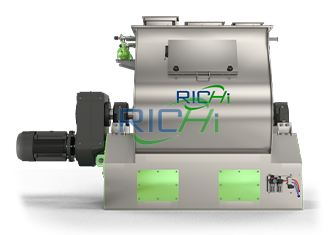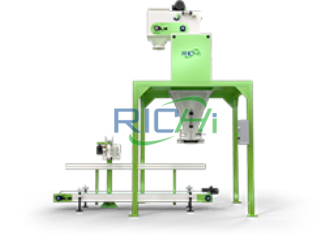Poultry Feed Manufacturing Plant Cost
Poultry feed manufacturing plant costs typically range from $10,000 to $2,800,000 or more, depending on plant capacity, automation level, and equipment configuration. Investing in a reliable poultry feed plant ensures consistent feed pellet quality, promotes healthy poultry growth, and generates long-term profitability.

What is the poultry feed manufacturing plant?
A poultry feed manufacturing plant is a specialized facility for producing high-quality feed for chickens, ducks, turkeys, and other poultry. Its production processes are scientifically designed to ensure nutritionally balanced, consistent quality, and easy consumption and digestion for poultry.
RICHI Machinery poultry feed manufacturing plant cost ranges from US$10,000 to US$2,800,000, and production capacity can range from a small production line of 1 ton per hour to a large commercial plant of 100 tons per hour. We can also customize higher capacity to meet the production needs of large-scale farms or feed suppliers. The choice of capacity, equipment, and automation level directly impacts feed quality, production efficiency, and overall investment cost.
The typical poultry feed production process includes raw material pretreatment, milling, mixing, pelleting, cooling and screening, and packaging.
- In the milling stage, a hammer mill is used to grind the raw materials into a suitable pellet size, ensuring uniform distribution of all ingredients during mixing and pelleting.
- In the mixing stage, a mixer is used to combine the milled ingredients according to the recipe. Different types of poultry have different nutrient requirements, and uniform mixing ensures that every feed pellet is nutritious.
- During the pelleting process, the mixed powder is fed into a feed pellet mill, where it is pressed into pellets under high temperature and pressure. Pellets are easier for poultry to consume, reducing feed waste and improving digestibility.
- Newly made feed pellets are hot. Cooling and screening reduce the pellet temperature, remove unacceptable debris, and ensure uniform pellet quality and hardness.
- Finally, packaging occurs, where the feed is bagged or stored in bulk to maintain quality and prevent moisture and contamination for subsequent storage, transportation, and distribution.
Poultry feed manufacturing plants utilize a systematic production process to transform raw materials and additives into high-quality feed pellets. This not only ensures healthy poultry growth, improves egg production, and overall productivity, but also provides feed manufacturers with a reliable and profitable business model.
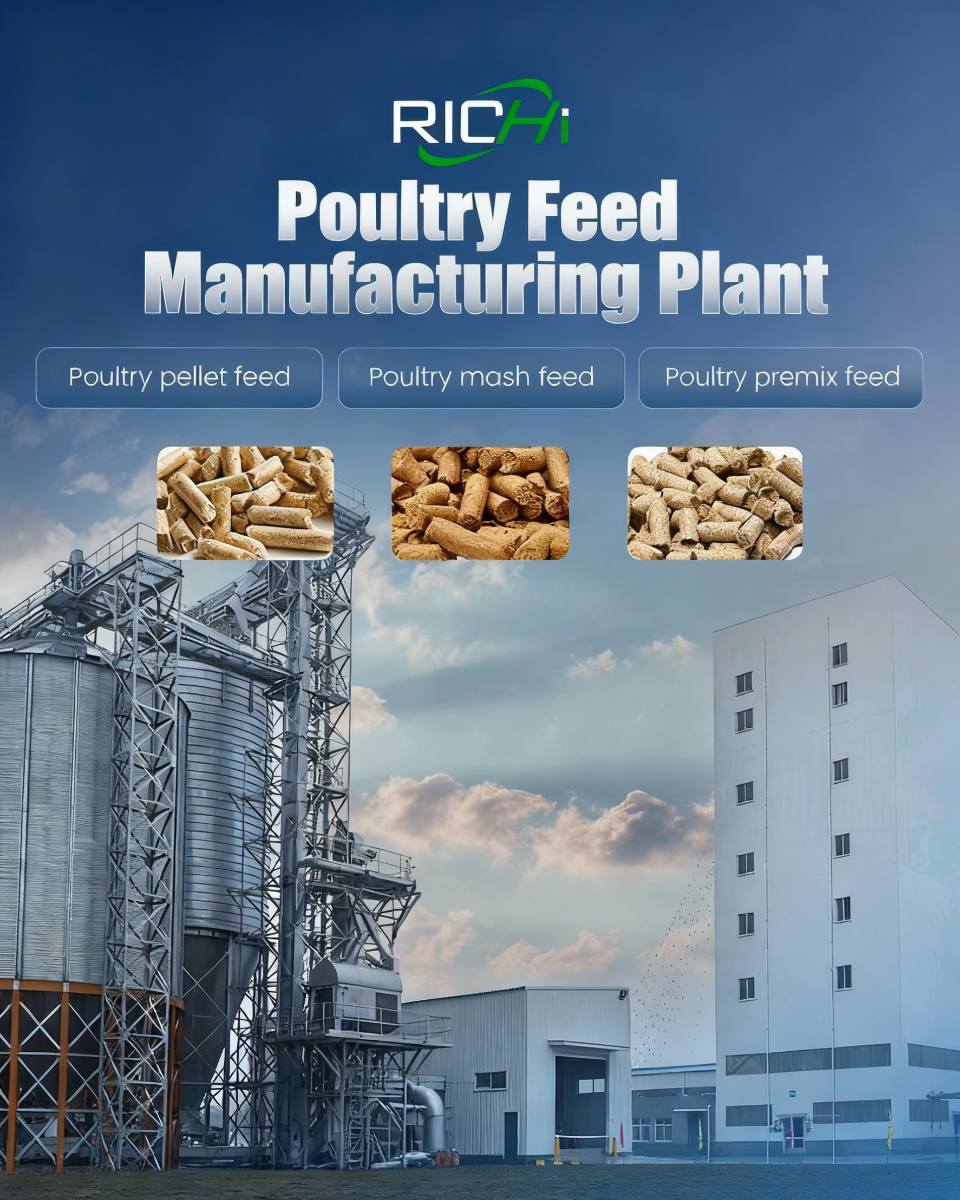
Project Video of RICHI poultry feed manufacturing plant
This section features a video showcasing RICHI Machinery’s 5-ton/hour poultry feed manufacturing plant. By exploring the equipment’s exterior structure, plant layout, and installation quality, you can intuitively experience RICHI’s professional design and reliable manufacturing processes.
Different Cost Of RICHI Poultry Feed Manufacturing Plant For Sale
Poultry feed manufacturing plant costs vary significantly depending on production capacity and configuration, primarily depending on production capacity, process flow, degree of automation, and key equipment configuration. RICHI Machinery offers feed plant equipment ranging from 1–100 tons/hour, flexibly customized to meet customer needs. Whether you’re a small-scale poultry farmer or a large, integrated feed company, RICHI can design a customized solution that balances performance, cost-effectiveness, and long-term stability.
1-2T/H Small Poultry Feed Manufacturing Plant
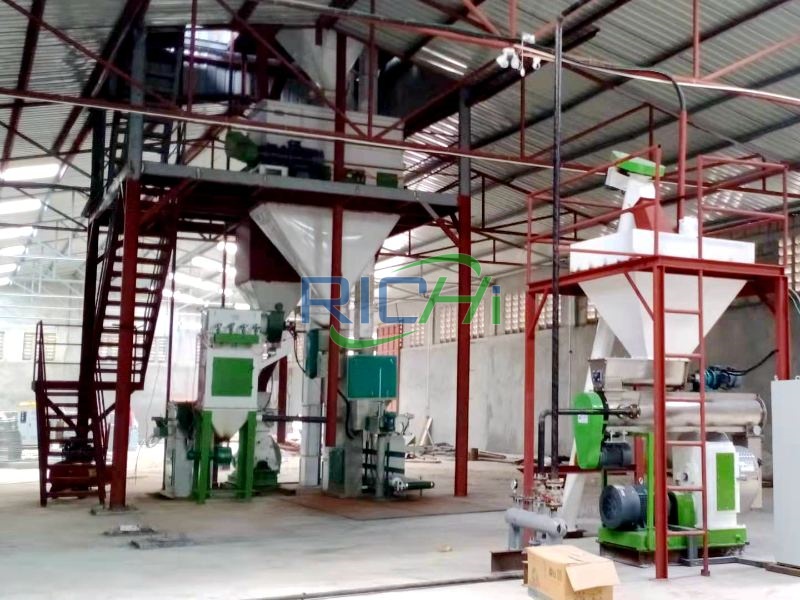
- Poultry Feed Manufacturing Plant Cost: 10,000-50,000 USD
- Total project power: 47-75KW
- Land use suggestion: 300-500m²
- Estimated installation period: 7-15 Days
3-4T/H Poultry Feed Manufacturing Plant

- Poultry Feed Manufacturing Plant Cost: 5,0000-12,0000USD
- Total project power: 53-165KW
- Land use suggestion: 300-700m²
- Estimated installation period: 15-20Days
5-7T/H Poultry Feed Manufacturing Plant
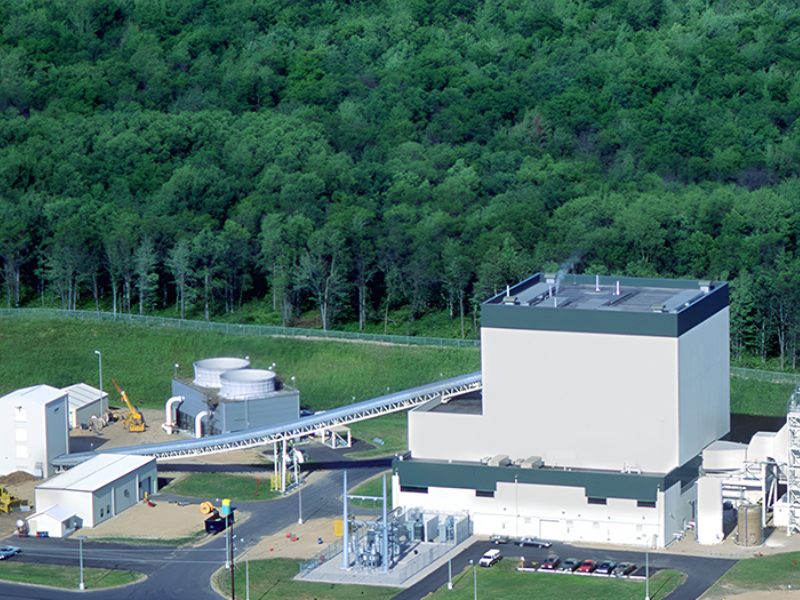
- Poultry Feed Manufacturing Plant Cost: 70,000-250,000 USD
- Total project power: 68-259KW
- Land use suggestion: 400-800m²
- Estimated installation period: 20-40Days
8-10T/H Poultry Feed Plant Project
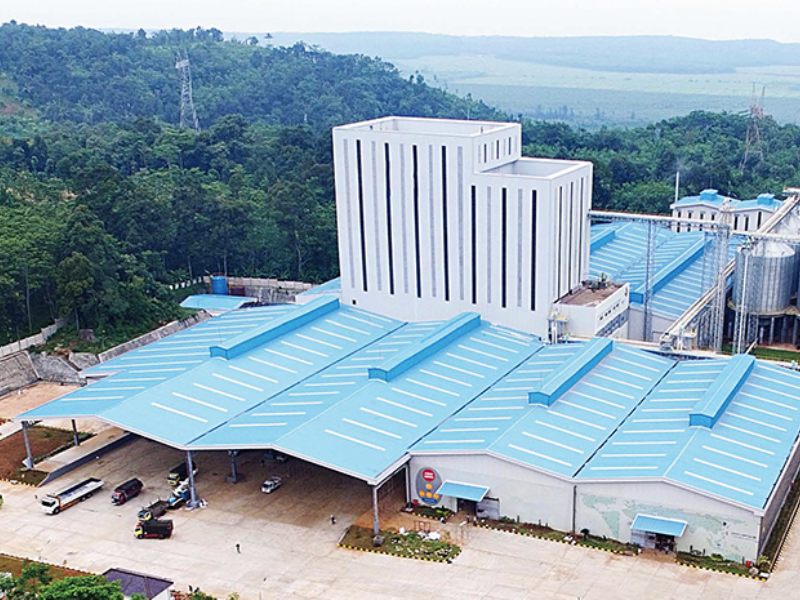
- Poultry Feed Plant Project Cost: 150,000-300,000 USD
- Total project power: 125-410KW
- Land use suggestion: 800-2000m²
- Estimated installation period: 45-60 Days
12-20T/H Poultry Feed Manufacturing Plant

- Poultry Feed Manufacturing Plant Cost: 250,000-580,000 USD
- Total project power: 358-620KW
- Land use suggestion: 1500-3000m²
- Estimated installation period: 60-90 Days
25-40T/H Poultry Feed Manufacturing Plant
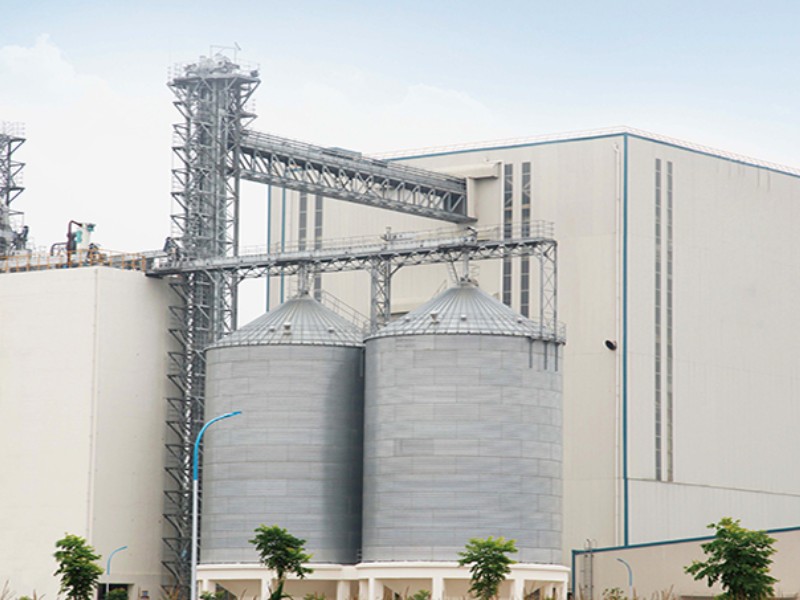
- Poultry Feed Manufacturing Plant Cost: 450,000-850,000 USD
- Total project power: 545-870KW
- Land use suggestion: 2000-4000m²
- Estimated installation period: 90-120 Days
50-60T/H Poultry Feed Mill Plant

- Poultry Feed Mill Plant Cost: 900,000-1,400,000 USD
- Total project power: 710-1120KW
- Land use suggestion: 3000-5000m²
- Estimated installation period: 100-140 Days
60-80T/H Poultry Feed Factory Plant
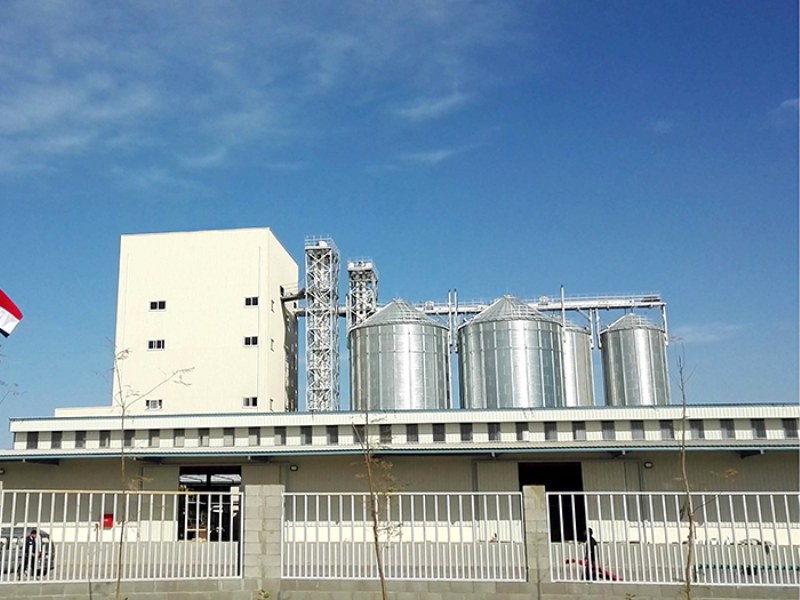
- Poultry Feed Factory Plant Cost: 1,450,000-1,800,000 USD
- Total project power: 815-1370KW
- Land use suggestion: 5000-8000m²
- Estimated installation period: 130-160 Days
80-100T/H Poultry Feed Plant
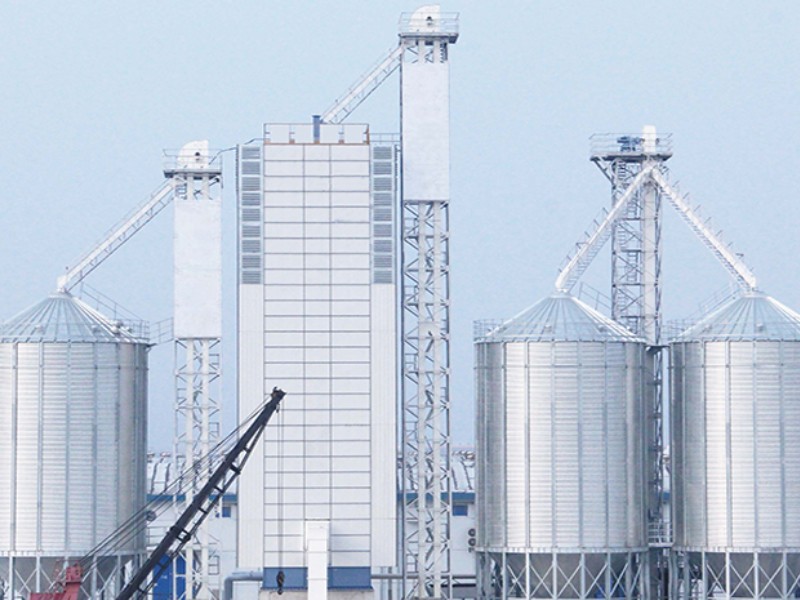
- Poultry Feed Plant Cost: More than 2,000,000-2,800,000 USD
- Total project power: 1230-1700KW
- Land use suggestion: 8000-20000m²
- Estimated installation period: 160 -190Days

Key Features Of RICHI Poultry Feed Manufacturing Plant
The RICHI poultry feed manufacturing plant utilizes advanced engineering design concepts and modern production technologies to ensure stable operation, high energy efficiency, and consistent production of high-quality feed. Each production line incorporates intelligent control systems, durable equipment structure, and flexible configuration options to meet the diverse needs of poultry feed producers of all sizes worldwide.
Leveraging extensive industry experience and proven engineering expertise, RICHI Machinery turnkey service encompasses design, manufacturing, installation, and commissioning, ensuring efficient production while minimizing overall poultry feed manufacturing plant costs.
Different Poultry Feed Manufacturing Plant Cost In Global Projects
Poultry feed manufacturing plant costs vary significantly across countries and regions, primarily due to local raw material prices, labor costs, electricity costs, infrastructure conditions, and production needs. RICHI has successfully built poultry feed production lines in over 140 countries and regions, tailoring each project’s investment structure and design to local market conditions.
RICHI’s true value lies in its long-term, stable production capacity, minimal downtime, and consistent feed quality. Whether for medium- to large-scale farms or commercial feed mills of various sizes, we can provide customized pellet equipment products and pellet plant solution tailored to your specific needs, achieving the best cost-performance ratio, ensuring stable operation, and delivering a high return on investment.
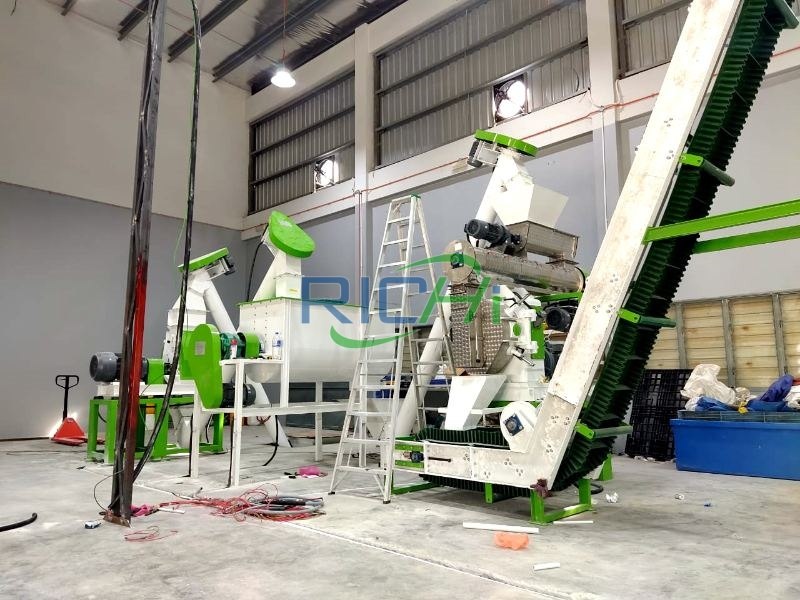
- Project Name: Poultry Feed Manufacturing Plant For Sale Malaysia
- Project Output: 3T/H
- Raw Materials: This poultry feed production line mainly uses corn (55%), soybean meal (25%), wheat bran (10%), rice husk (5%), and premix (5%) as raw materials. All ingredients are sourced from local agriculture, focusing on broiler and layer feed production.
- Poultry Feed Manufacturing Plant Cost: About 62,000 USD
- Customer Feedback: “We first collaborated with RICHI on the construction of our first 3-ton/hour poultry feed line. The equipment continues to operate reliably and easily maintained. We’ve found that RICHI’s crushing and mixing system is particularly well-suited to local raw materials, producing pellets with a uniform appearance and moderate hardness. Their engineering team is also very professional, continuously optimizing their solutions based on our raw material testing results. This is not only a successful investment, but also a long-term technical partnership.”
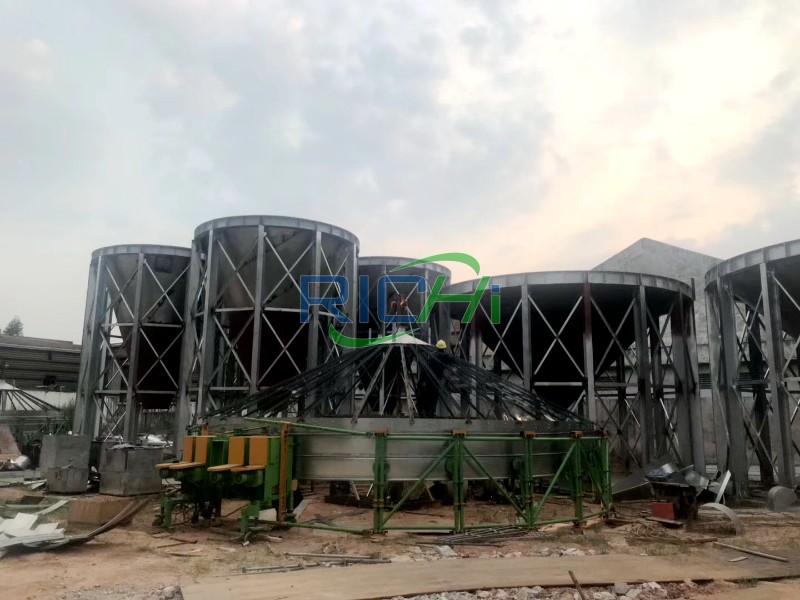
- Project Name: Algeria Compound Feed Production Line (Poultry Feed + Premix Feed)
- Project Output: 30T/H
- Raw Materials: The poultry feed section uses corn (50%), soybean meal (20%), barley (15%), sunflower cake (10%), and mineral/vitamin premix (5%).
The premix production system blends vitamins, amino acids, enzymes, and trace elements for poultry nutrition balance. - Poultry Feed Manufacturing Plant Cost: About 655,000 USD
- Customer Feedback: “This RICHI compound feed production line uses nearly 12% less energy than our previous equipment, and its level of automation has been significantly improved. Our labor requirements have been reduced by half, while production efficiency has increased by over 20%, and product quality is more stable. In actual production, we were deeply impressed by their control system and automatic weighing module, and this line achieved payback in less than a year.”

- Project Name: Poultry Feed Manufacturing Plant in Uzbekistan
- Project Output: 5T/H
- Raw Materials: The feed formula mainly includes corn (60%), wheat (20%), soybean meal (15%), and vitamin/mineral premix (5%).
- Poultry Feed Manufacturing Plant Cost: About 85,000 USD
- Customer Feedback: “Our raw materials are primarily local grains, which are high in fiber. Ordinary equipment struggles to achieve the desired particle density. The RICHI engineering team personally went on-site to take samples and conduct tests, and improved the crushing and conditioning processes. Our output is now about 15% higher than the design value, while energy consumption is lower. Their after-sales team always responds quickly remotely, and their technical support is very professional and reliable.”
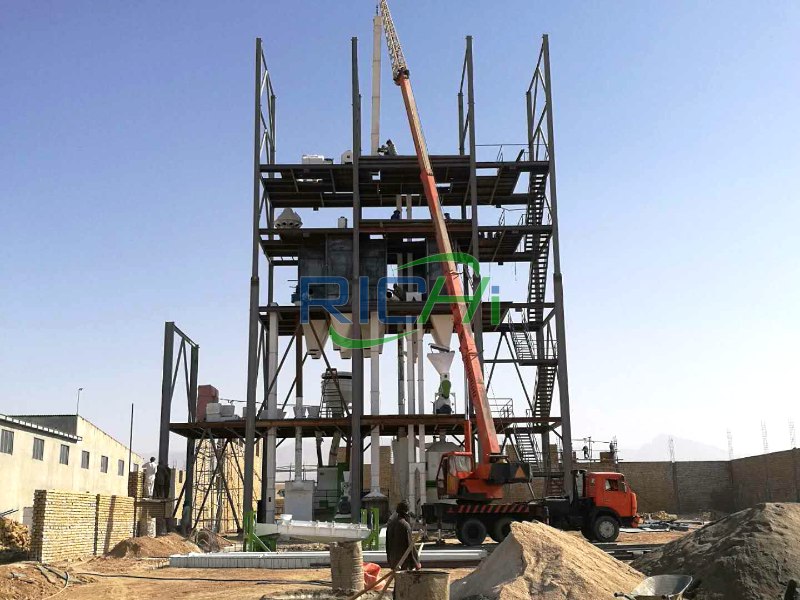
- Project Name: Chicken Feed Production line in Afghanistan
- Project Output: 10T/H
- Raw Materials: The plant processes a complex mix of corn (40%), wheat bran (20%), soybean meal (15%), cottonseed meal (15%), and premix (10%).
- Poultry Feed Manufacturing Plant Cost: About 171,000 USD
- Customer Feedback: “From our first animal feed pellet plant to our third, we have been working with RICHI for over five years. They not only sell us equipment, but also serve as our long-term technical partner. Every time we upgrade our production capacity, they pay us a return visit to understand the usage and provide optimization suggestions. This 10-ton line has very high pelletizing efficiency, and its energy consumption is about 10% lower than expected. This stable, long-term, and trusting cooperation is what we value most.”
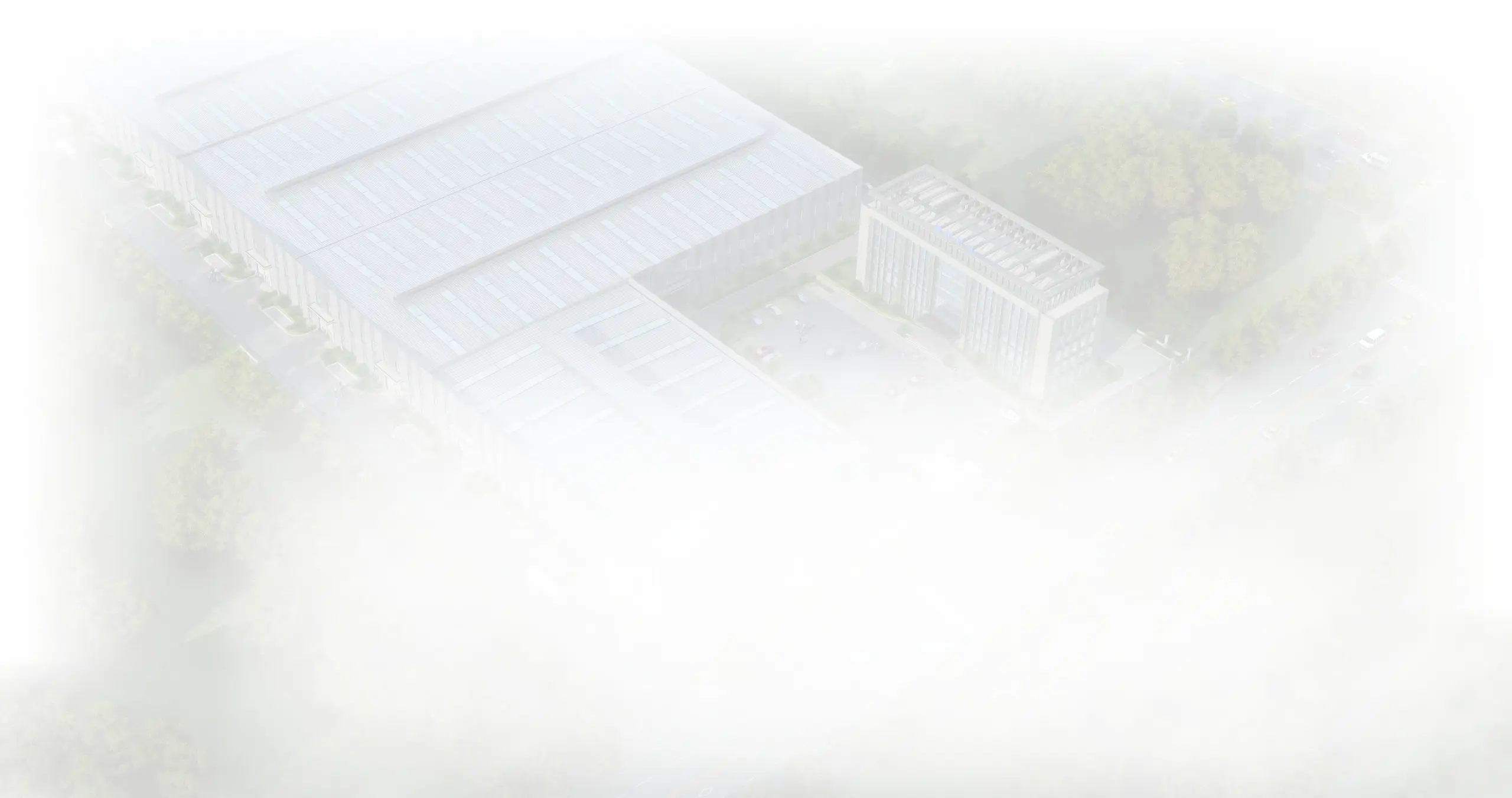
Complete Poultry Feed Manufacturing Process
The complete poultry feed production process is a systematic chain that transforms agricultural raw materials into nutritionally balanced feed pellets suitable for different types of poultry. The entire process is scientifically designed to ensure consistent feed quality, adequate nutrient absorption, and maximum production efficiency. From raw material preparation to packaging and discharging, every link plays a vital role in ensuring stable production capacity and reducing operating costs.
1
Raw Material Receiving & Inspection
During harvesting, transportation, and storage, feed raw materials are prone to contamination with sand, metal impurities, and dust. Thorough cleaning of raw materials ensures the purity and safety of the materials entering subsequent processes while also reducing wear and tear on equipment.
2
Crushing Section:
Crushing is a key step in improving feed utilization. Using a hammer mill, large particles like corn and soybean meal are broken down into smaller particles, making them easier to mix evenly, facilitating digestion and absorption by animals, and providing a good foundation for subsequent pelleting.
3
Mixing Section:
In this process, the main ingredients, protein source, vitamins, and minerals are weighed and mixed thoroughly and evenly according to the animal’s dietary and nutritional needs. This ensures a consistent distribution of ingredients in each batch of feed, ensuring a nutritionally balanced diet for every bite.
4
Pelletizing Section:
The evenly mixed raw materials are then fed into the animal feed pellet mill for pelleting. Steam conditioning is used to moderately mature the raw materials, improving starch gelatinization and feed digestibility. Subsequently, they are rolled and pressed to form high-quality, full-bodied pellets.
5
Cooling & Screening Section:
Freshly produced feed pellets are hot and contain high amounts of moisture. Direct packaging can easily lead to mold or breakage. Therefore, they must be cooled to near room temperature. After cooling, they are screened to remove debris and fines generated during production, ensuring that the finished pellets meet standards.
6
Packaging Section:
After passing quality inspection, the pellets are packaged using an automated packaging system. This packaging not only facilitates storage and transportation but also effectively prevents moisture and contamination, extending the shelf life of the feed.
Main Equipment of Poultry Feed Manufacturing Plant
Production equipment configuration not only determines feed production efficiency but also directly impacts total investment costs. Each piece of equipment plays a critical role in the entire feed production process, from raw material grinding, mixing, and pelleting to cooling and packaging. Equipment selection also requires balancing production capacity, degree of automation, and budget—all factors that directly impact the overall poultry feed manufacturing plant cost.
Why Choose Our Poultry Feed Manufacturing Plant
When investing in a poultry feed manufacturing plant, it’s important to consider not just the initial price but also long-term performance, stability, and after-sales support. RICHI Machinery combines advanced technology, strict quality standards, and global project experience to provide customers with high-performance, cost-effective feed production solutions.
High Cost Performance with Reliable Quality
RICHI’s poultry feed manufacturing plant ensures high production capacity while reducing operating costs. Each production line is optimized for energy consumption control, automation, and ease of operation, helping customers achieve higher output with less investment.
Equipment components are constructed from wear-resistant materials and precision-machined to ensure stable performance even under continuous production conditions. This perfect combination of high durability, high efficiency, and reasonable pricing makes RICHI an ideal choice for customers seeking a long-term return on investment.
Comply with International Standards
All RICHI feed production equipment complies with international certifications, including CE, ISO, and SGS. We adhere to rigorous inspection procedures throughout the entire process, from raw material selection to assembly and testing.
Our quality control system ensures that every component, from motors and reducers to control systems, meets industrial-grade reliability and safety standards. This certified quality assurance not only ensures long equipment life and stable performance, but also provides customers with greater confidence when exporting or operating internationally.
Trusted by Customers in 140+ Countries
RICHI Machinery’s animal feed mill plants and complete feed solutions are exported to over 140 countries and regions worldwide, covering markets across Asia, Africa, Europe, and the Americas.
With superior equipment performance, comprehensive after-sales service, and an efficient global logistics system, RICHI has established long-term partnerships with customers worldwide.
Thousands of customers worldwide choose RICHI because we offer the perfect balance of quality, technology, and value.
In addition to providing high-quality equipment, RICHI Machinery turnkey service is customized according to customer needs to ensure that users can smoothly start cattle feed production and achieve long-term profitability.
FAQ
To help you make a more informed investment decision, we’ve compiled a list of frequently asked questions from customers around the world. These answers will help you gain a more comprehensive understanding of poultry feed manufacturing plant costs.
What factors affect the poultry feed manufacturing plant cost?
+
Many factors influence poultry feed manufacturing plant costs, and understanding them can help you make more informed investment decisions:
- Production Capacity: The larger the production capacity, the higher the total investment cost. For example, a small 1 ton/hour production line costs approximately $10,000–50,000, while a large commercial feed plant with a capacity of 100 tons/hour can cost $2.8 million or more.
- Degree of Automation and Equipment Configuration: Semi-automated production lines are less expensive but require more labor. Fully automated production lines, while requiring a higher initial investment, can significantly reduce labor costs and improve production stability.
- Raw Material Type and Formulation: Raw material hardness, moisture content, and composition (e.g., corn, soybean meal, rice bran, etc.) influence the type and quantity of equipment required, such as grinders, mixers, and pelletizers, thus affecting the overall investment.
- Plant Layout and Auxiliary Systems: In addition to the main equipment, auxiliary equipment such as dust removal, cooling, packaging, storage silos, and conveying systems also contribute to investment costs while improving production efficiency. Furthermore, civil engineering and plant design costs should be considered.
- National Transportation and Installation Costs: Freight costs, import tariffs, and installation labor costs vary significantly between countries or regions, all of which impact the total project investment.
In general, the cost of a poultry feed manufacturing plant is not simply the price of the equipment, also it is a comprehensive investment determined by production capacity, configuration, degree of automation, and the overall project plan.
How long does it take to set up a poultry feed manufacturing plant?
+
The installation and commissioning time for a poultry feed manufacturing plant depends primarily on the project size, number of equipment, and degree of automation.
- Small-scale production lines (1–4 tons/hour): Due to its compact layout and standardized modular design, RICHI’s installation cycle is short, typically completing installation and commissioning within 7–20 days.
- Medium-scale projects (5–20 tons/hour): The installation cycle typically takes 20–90 days, depending on the number and complexity of auxiliary systems (such as raw material silos, conveying equipment, and dust removal systems).
- Large-scale or commercial feed plants (20–100 tons/hour): Due to the multi-unit layout, large-scale conveying, and automated control systems involved, the overall installation and commissioning period typically takes 160–190 days. This process includes mechanical installation, electrical wiring, control system testing, and trial production.
Overall, RICHI provides comprehensive installation guidance and employee training to ensure your project’s rapid commissioning and stable operation.
Can a poultry Feed Manufacturing Plant produce feed for different poultry feed?
+
Yes. A single poultry feed production line can flexibly produce a variety of poultry feed types, such as broiler feed, layer feed, breeder feed, and duck/goose feed. This can be achieved by simply adjusting the feed formula, production parameters, and pellet diameter.
In RICHI’s system, the entire process, from grinding, mixing, pelletizing, cooling, and packaging, is adjustable, allowing a single production line to efficiently handle a variety of feed types:
- Broiler feed: Emphasizes rapid growth and a high protein ratio, with pellets typically 2–3 mm in diameter;
- Layer feed: Targets stable egg production, often supplemented with calcium and vitamins, with pellets approximately 3–4 mm in diameter;
- Breeder feed: Emphasizes reproductive performance and requires a precise nutrient profile;
- Duck/goose feed: Features larger pellets (4–5 mm) and higher energy and fat content.
By adjusting the raw material ratio or changing the mold, you can produce a variety of animal feeds on a single production line, improving your return on investment and reducing equipment duplication.
I have 50,000 broiler chickens and 30,000 layer chickens. What capacity of poultry feed manufacturing plant should I choose?
+
If you have approximately 50,000 broilers and 30,000 laying hens, your daily feed consumption will be considerable. A typical chicken consumes about 120 grams of feed per day, meaning your flock requires approximately 9.6 tons of feed per day. Assuming a 6–8-hour operation, a poultry feed production line with a capacity of 1.5–2 tons per hour will fully meet your production needs.
RICHI recommends a small poultry feed production line with a capacity of 1–2 TPH. This capacity ensures daily feed supply while balancing energy efficiency and ease of management, making it suitable for medium- to large-scale farms. If you plan to expand your farm in the future, you can upgrade your production line to a higher capacity by adjusting the equipment configuration, enabling flexible expansion.
If my raw materials are already in powder form, can I buy only part of the poultry feed manufacturing plant?
+
Yes, absolutely. If your raw materials (such as corn, soybean meal, or other feed ingredients) are already ground into powder, you can configure mixing, pelleting, cooling, and packaging processes.
RICHI Machinery can provide customized solutions based on your existing production conditions. For example, many farms or feed mills already have a grinding system and only need to invest in a mixer, pelletizer, cooler, and packaging machine. This approach not only significantly reduces initial poultry feed manufacturing plant costs, but also ensures production efficiency and feed quality.
We can also redesign your process flow to ensure smooth material transfer and consistent finished feed quality. Whether you choose to build a complete or partial production line, you can achieve efficient production.




